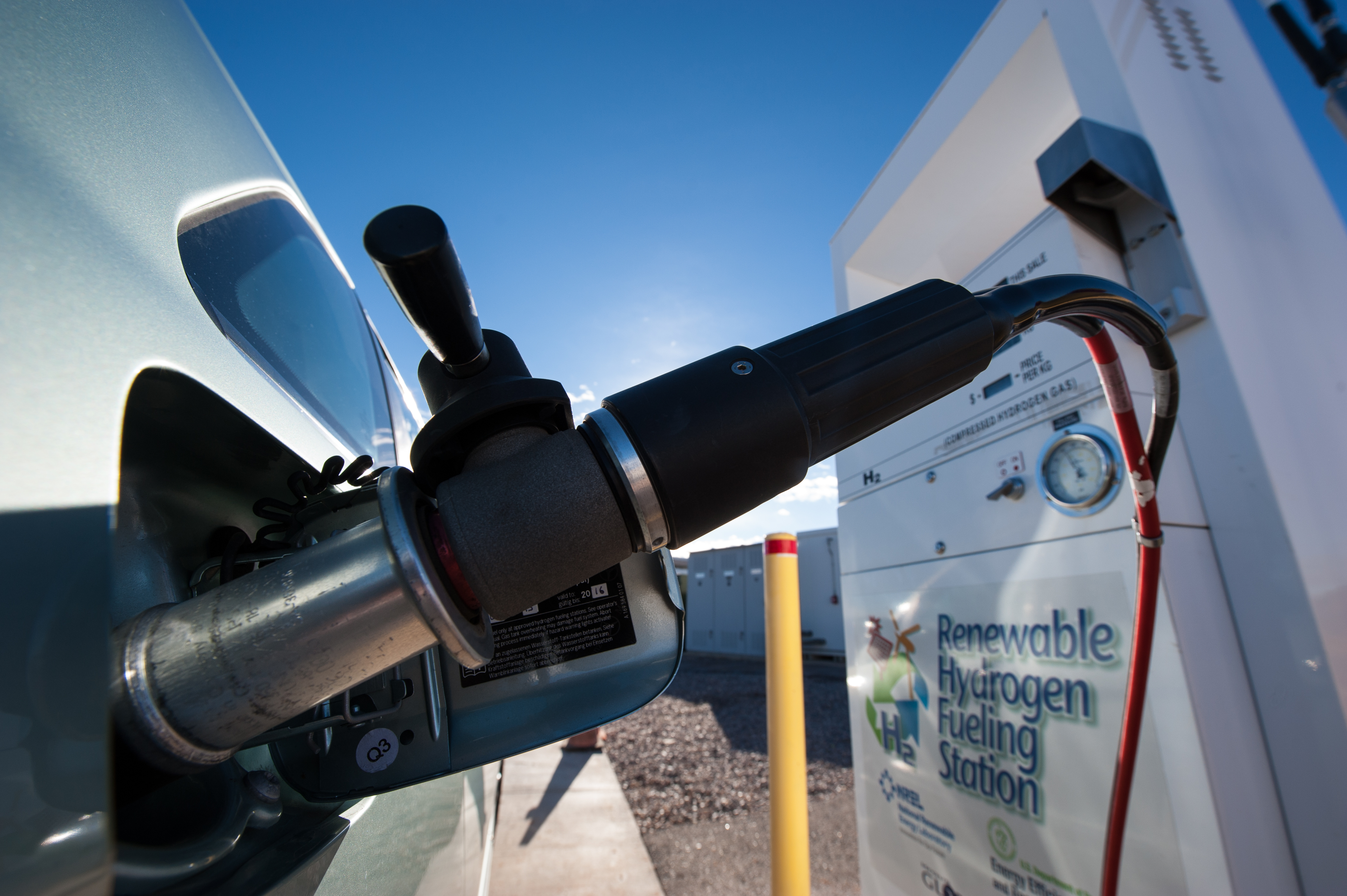Quiz: How Much Do You Know About Hydrogen and Fuel Cells?
Hydrogen and fuel cell technologies power cars, buildings and more. But how much do you know about them? Test your knowledge with this quiz!
1. How do fuel cells generate electricity?

Much like a battery, a fuel cell produces electricity through an electrochemical reaction, which generates electricity without any combustion. Unlike batteries, fuel cells don't wear out and continuously provide electricity as long as there's a constant source of fuel and oxygen.
2. What do fuel cells emit?
Fuel cells typically generate electricity using hydrogen and emit only water and heat. For polymer electrolyte membrane (PEM) fuel cells, hydrogen is fed into one side of the fuel cell, and oxygen is fed into the other. Hydrogen ions pass through a membrane and react with the oxygen on the other side to form H2O (or water) and create electricity.
3. When was the first fuel cell invented?

Welsh scientist Sir William Robert Grove is credited for inventing fuel cells in 1839. However, the technology wasn't used commercially until the 1960s.
4. How do you boost the amount of electricity a fuel cell system produces?
A single fuel cell produces about one volt of power. To increase the amount of electricity generated, individual fuel cells are combined to create a fuel cell stack. Depending on the application, a fuel cell stack might only contain a few cells, such as when used for portable power generation for laptops or other consumer electronics, or hundreds of individual cells, like when used to power passenger vehicles.
5. When were fuel cells first used in space?

NASA first used used fuel cells in 1965 to power onboard electronics during the Gemini 5 mission, which broke the world's manned spaceflight endurance record. Fuel cells not only provided power but also water for astronauts. The technology improved and was used on all subsequent manned space missions including the Apollo and Space Shuttle programs.
6. What was the first fuel cell electric vehicle to be certified by the Environmental Protection Agency?

General Motors developed the first publicly drivable fuel cell electric vehicle in 1966. However, in 2002, the Honda FCX was the first fuel cell vehicle in the world to receive government certification by the Environmental Protection Agency. There are currently three fuel cell vehicles in production: the Honda Clarity, Toyota Mirai, and Hyundai Tucson Fuel Cell Electric Vehicle.
7. What are the two most common ways to produce hydrogen gas used in fuel cells?

Since hydrogen does not exist as a gas on Earth, it must be separated from other elements. Hydrogen atoms can be separated from water, natural gas molecules or biomass. The two most common ways to produce hydrogen are steam reforming (using high-temperature steam to produce hydrogen from natural gas) and electrolysis (splitting water).
8. How do you refuel a fuel cell electric vehicle?

To refill a fuel cell electric vehicle, you pump hydrogen gas from a hydrogen fueling station directly into the tank. Fuel cell electric vehicles can have a driving range of more than 300 miles on one tank of hydrogen. Since fuel cell systems are more than two times as efficient as an internal combustion engine, you need half the amount of hydrogen to go just as far.
9. In general, how much hydrogen is produced in the United States every year?

Hydrogen is a standard industrial chemical commodity today. In the United States, approximately 10 million metric tons of hydrogen are produced every year, most of which is used for petroleum recovery and refining purposes as well as ammonia production.
10. Which state has the most hydrogen fueling stations?

There are more than 50 hydrogen fueling stations already up and running in California (20 of these are public stations) with funding in place for a total of 100. Stations are also in development in the Northeast with an agreement between eight states committing to putting 3.3 million zero-emission vehicles on the roads by 2025, including FCEVs.
11. How much of the known universe mass is made up of hydrogen?

Hydrogen is the most abundant element in the universe. About 75 percent of all matter is composed of hydrogen.
Your Score:
Hydrogen and fuel cells are on the rise with auto manufacturers rolling out fuel cell electric vehicles and hydrogen fueling stations popping up around the country. But how much do you know about this important technology? Test your knowledge with our latest quiz and learn more from the Fuel Cell Technologies Office.




